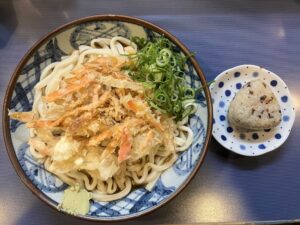The Charms and Enjoyment of Japanese Curry Rice
What makes Japanese curry rice different from Indian curry? This article delves into its history, characteristics, cooking methods, recommended eateries, and more. Let’s explore the allure of Japanese curry rice together!

History of Japanese Curry Rice
The advent of curry rice in Japan during the Meiji era stemmed from the introduction of Indian curry by the British. It gained popularity in various spheres like the military and school lunches due to its high nutritional value and long shelf life. Embraced as a familiar stew-like dish, it has been cherished by the Japanese.
The consumption of curry rice in Japan has been steadily increasing. In 2019, each person consumed approximately 8.6 kilograms, making Japan one of the nations most enthusiastic about curry worldwide.
Characteristics of Japanese Curry Rice
Japanese curry rice boasts distinct features compared to Indian curry:
- Thickness: Japanese curry rice thickens using wheat flour, while Indian curry relies solely on spices. Hence, Japanese curry has a stew-like consistency, while Indian curry is commonly a thinner, soup-like consistency.
- Spices: Japanese curry often uses store-bought curry roux or powder, while Indian curry is made by blending various spices at home. Consequently, Indian curry offers rich aromas and varying levels of spiciness, varying by region and household.
- Staple: Japanese curry rice is typically enjoyed with rice, hence termed rice curry. In contrast, Indian curry is accompanied not only by rice but also by wheat-based flatbreads like naan or chapati. Naan is considered a luxury in India, with chapati being the more common choice.
Cooking Japanese Curry Rice
Preparing Japanese curry rice is straightforward. Here are the required ingredients:
- Onion
- Carrot
- Potato
- Meat (beef, chicken, etc.)
- Water
- Bay leaf
- Curry roux
- Spices like garam masala
- Rice
The steps are as follows:
- Begin by chopping the onion, carrot, potato, meat, and other ingredients.
- Heat oil in a pot and sauté the meat and onion until the onion caramelizes.
- Add water and bay leaf, bring it to a boil, removing any impurities. Simmer until the ingredients become tender.
- Turn off the heat, add curry roux, dissolve it thoroughly, and simmer until the curry thickens.
- Finally, adjust the taste by adding spices like garam masala. Serve it over rice for delicious curry rice!
Conclusion
Japanese curry rice is an adaptation of Indian curry in a Japanese style. While differing in consistency, spices, and accompaniments, its appeal lies in its simplicity, versatility, and depth of flavor. It’s a dish born from historical influences and culinary differences unique to Japan. The variations in how it’s enjoyed, with different ingredients and personal preferences, continue to expand. Embrace the distinct culture of Japanese curry rice, separate from the curry of India, and enjoy its richness and diversity.


